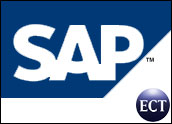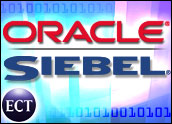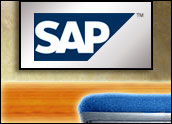
It was no surprise thatIBM andSAP joined ranks to promote SAP’son demand CRM product a day after Oracle’s acquisition ofSiebel concluded.
It’s very clear that the consulting,database and applications powerhouses have a common interest in opposing the California-based Axis of CRM represented by Oracle-Siebel,Salesforce.com andNetSuite. Clearly, the battle lines are being drawn in the sand, and it will be interesting to see how the California crew responds.
At its announcement Thursday, which I watched on the Web, SAP representatives said two things that should resonate with everyone in the CRM and on-demand industries. First, each speaker talked about listening to the customer — or, if that speaker happened to be an SAP customer, being listened to. There’s everything to like about that. It helps to ensure that good products are built and that service is appropriate.
Second, the company talked about CRM as a business process carried out with customers rather than as something that is done to customers. You have to like that. Companies generally understand that we are in an era in which revenue increases will be the result of better engagement with customers rather than grabbing market share. Treating CRM as a true business process will help any company to do better.
There were also comments that made me just want to roll my eyes. At times, I was reminded of the state of the union address. There were a lot of warmed-over ideas that sounded like motherhood and apple pie, but nevertheless made me wonder, is that it?
Living in the Past
For example, the company trotted out ROI and TCO again. Those two financial metrics — return on investment and total cost of ownership — are vital to the success of almost any business endeavor, but they are by-products of success that is driven by offering the right product at the right price and right time.
More to the point, ROI and TCO were real hot button issues a few years ago when a “small” CRM system could cost millions of dollars, including a consulting engagement that might have cost three or four times the software license. After six years of on-demand and constant market pressure to drive down costs, the CRM industry already has a good grip on costs.
At a monthly entry price of US$75 per user seat, SAP is not even the low-cost leader, so it is not clear what’s left for it to provide in that area.
The ROI and TCO pronouncements were emblematic of other market needs the company said it observed, including fast implementation and ease of user adoption. Again there’s no argument that these things are important; it’s just that they aren’t the same hot button issues they were six years ago.
Back then, sales representatives had little experience with sales force automation (SFA), and the products were not as well thought out as they are now. At that point, user adoption was a major issue. Companies routinely had to choose between their CRM systems and their mutinous sales teams. Most chose the latter and complained to their CRM vendors with reason.
We’ve been beating that horse to death ever since, despite the significant advances in user interfaces, training and continued development. Again, it’s hard to see what a new system offers that is different.
Time to Move On
The phrase, ontology recapitulates phylogeny, coined by the 19th century German philosopher Ernst Haeckel, comes to mind. Loosely translated, it means that the development of the individual retraces the evolution of the type. If that’s true, SAP is on track.
It has introduced SFA and promises marketing and service modules to be delivered in upcoming waves, more or less recapitulating the evolution of the CRM suite. From that perspective, it makes some sense that the company would be shooting at the CRM demons of yesteryear. However, the reality is that the market and users have moved on, and yesterday’s issues are just that.
SAP also introduced what it alluded to as a third-generation delivery model, which it said would be more stable and prevent outages. Unfortunately, if the on-demand model is all about syndicating access to really expensive hardware and software, the infrastructure SAP introduced is more about corralling a lot of gear in a safe location — which is very reminiscent of facilities management with some new twists.
Perhaps the biggest question SAP’s announcement raises is how on-demand will change the company’s business model. One of the hallmarks of disruptive innovation theory is that when the incumbent vendors realize their franchise is at stake, they try to bring the innovation in-house; maybe they call it a hybrid solution.
The results are almost universally disastrous — the last company that tried to have it both ways is now a part of Oracle. Still, that’s what SAP is trying for. The alternative to the big disaster, by the way, is a smaller one: The innovation fails. We’ll see.
What Lies Ahead
No matter what position you take, you can’t discount SAP’s entry into the on-demand market. No doubt it will win some business, and no doubt other vendors will win more — for now. More competition will mean more bakeoffs, and the more bakeoffs there are, the more each company will learn about competition and demand.
Perhaps the biggest things SAP has going for it right now are its customer orientation and the belief that CRM is all about process. Backed by those ideas — and a lot of development money — SAP’s entry promises interesting times ahead for on-demand CRM.
Denis Pombriant is a well known thought leader in CRM and the founder and managing principal of the Beagle Research Group, a CRM market research firm and consultancy. Pombriant’s latest white paper, Adding Sales to the Call Center Agenda, summarizes his recent research in the call center industry. In 2003, CRM Magazine named Pombriant one of the most influential executives in the CRM industry. Pombriant is currently working on a book to be published next year. He can be reached at [email protected]
























































